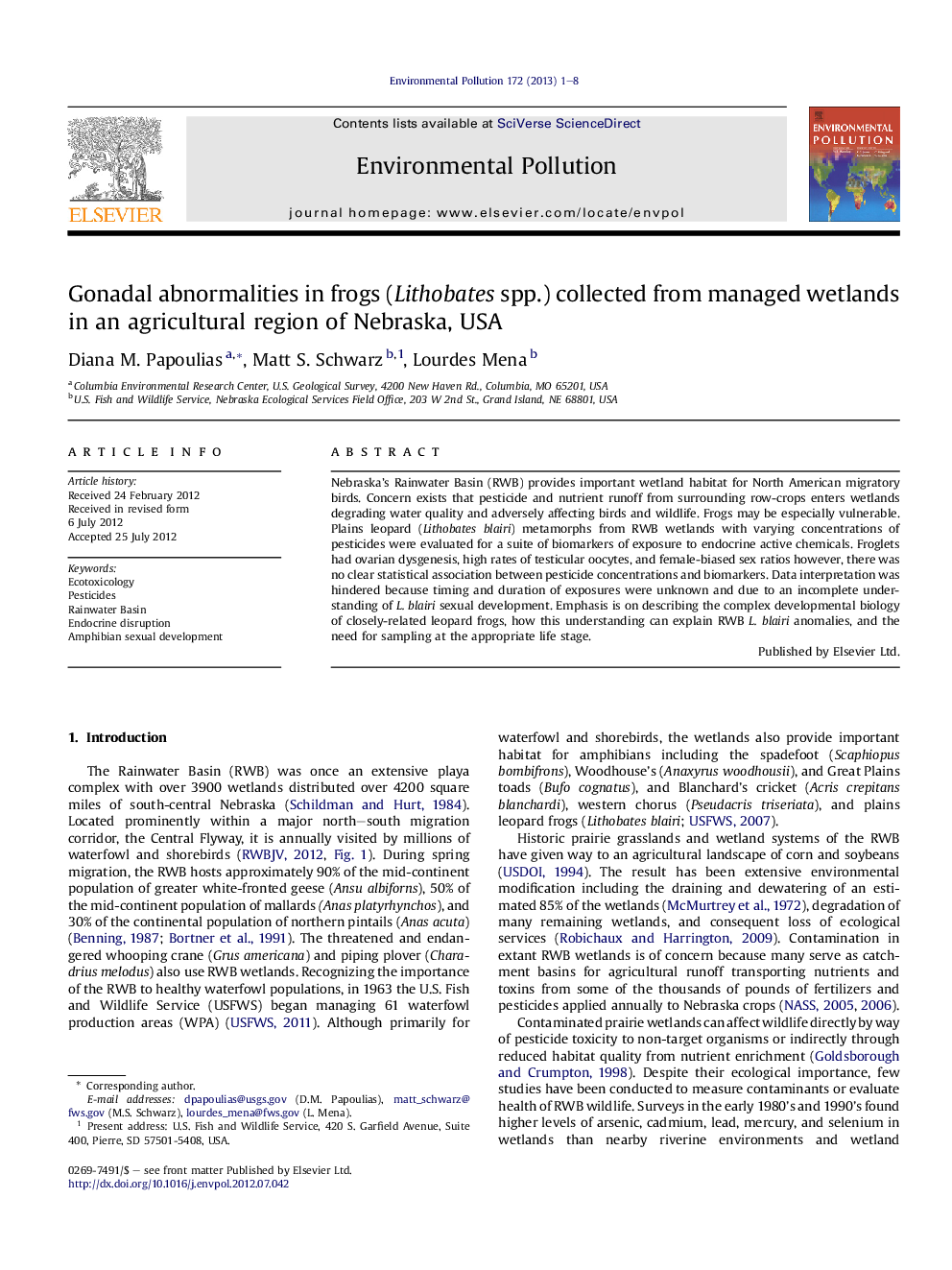| Article ID | Journal | Published Year | Pages | File Type |
|---|---|---|---|---|
| 4424710 | Environmental Pollution | 2013 | 8 Pages |
Nebraska's Rainwater Basin (RWB) provides important wetland habitat for North American migratory birds. Concern exists that pesticide and nutrient runoff from surrounding row-crops enters wetlands degrading water quality and adversely affecting birds and wildlife. Frogs may be especially vulnerable. Plains leopard (Lithobates blairi) metamorphs from RWB wetlands with varying concentrations of pesticides were evaluated for a suite of biomarkers of exposure to endocrine active chemicals. Froglets had ovarian dysgenesis, high rates of testicular oocytes, and female-biased sex ratios however, there was no clear statistical association between pesticide concentrations and biomarkers. Data interpretation was hindered because timing and duration of exposures were unknown and due to an incomplete understanding of L. blairi sexual development. Emphasis is on describing the complex developmental biology of closely-related leopard frogs, how this understanding can explain RWB L. blairi anomalies, and the need for sampling at the appropriate life stage.
► We collected froglets from wetlands in agricultural and non-agricultural areas. ► We compared metamorph gonad morphology and parasite abundance. ► Pesticides, parasites were lower in wetlands buffered against agricultural run-off. ► Abnormalities were enlarged ovarian cavities, testicular oocytes, biased sex ratios. ► Results show importance of understanding normal reproductive biology of the species.
